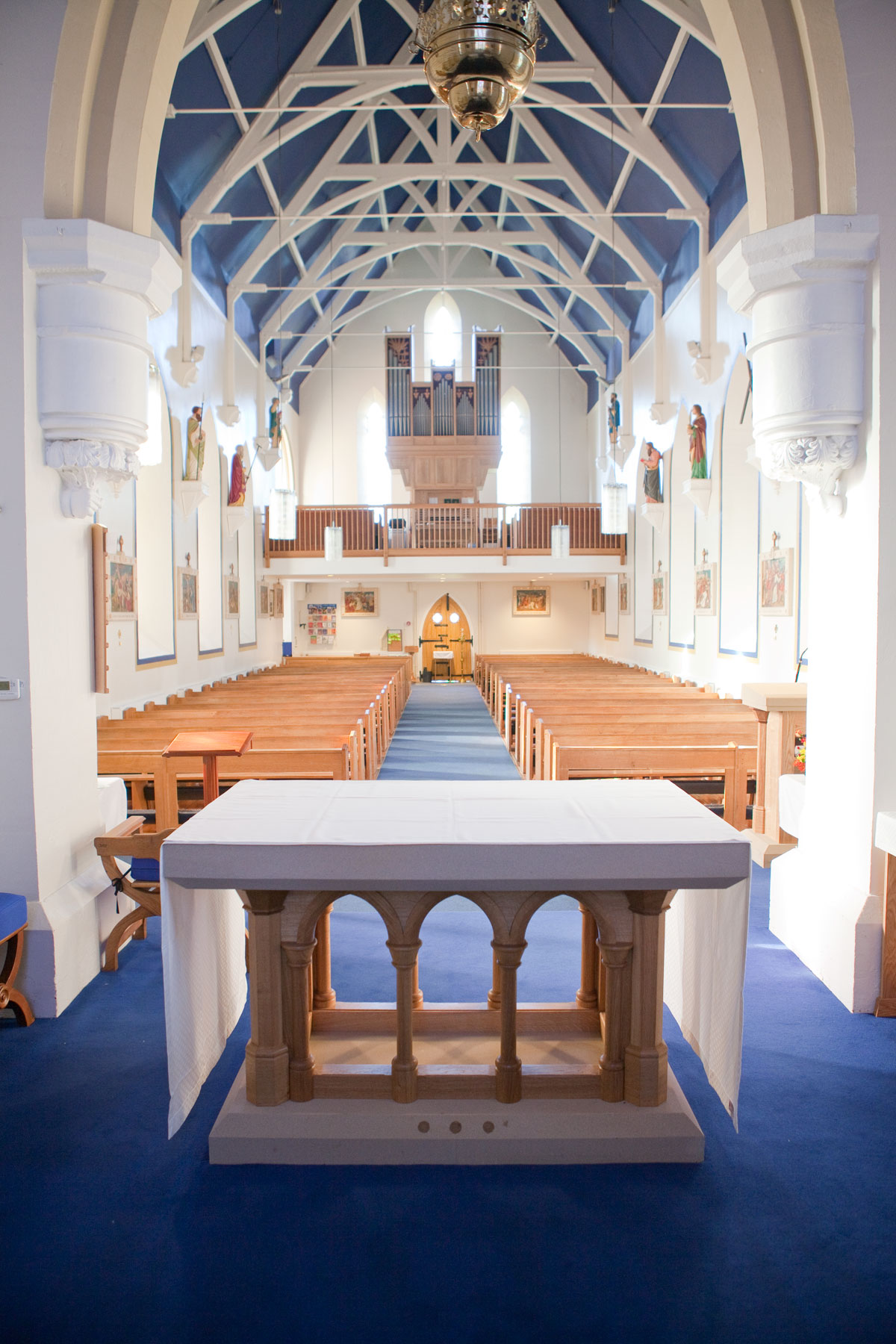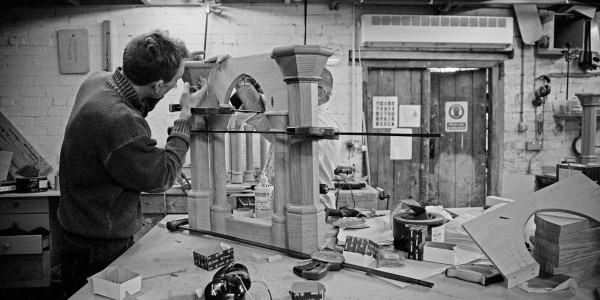Oak gate, Newcastle
31st March 2016Reclaimed oak altar and lectern, St Marys
31st March 2016
"It's always a bit special when you know your client is God. Of course, I don't mean that literally, but what I do mean is that we're working on a piece of furniture that has the highest of expectations placed on it. It has to be functional, beautiful and in harmony with the spiritual make up of the church. And it's going to get used a lot, for the next hundred years or so. There's a lot of expectation, but we like that."
The altar was commissioned as part of the restoration work at St Roberts in Morpeth, Northumberland. A fire gutted a large part of the church and work is underway to bring it back to its former glory. The brief came via Paul Lewis at Lewis Surveying Associates who mapped out initial ideas for the altar upon which Geoff and long-standing employee Stephen Arthur heaped their considerable cabinet-making expertise.
"Each project that comes through the door at Langley has very particular requirements and quite often we're making furniture that has never been designed before, certainly not mass produced. My first memory of the altar was seeing that it needed to support a three quarters of a ton slab of local sandstone. That really focussed us and I knew we'd have to be very particular about how we constructed strength into each and every joint, even though it would have a steel support in its core."
Using the highest grade seasoned European oak, Stephen set about hand turning the twelve legs that would, with its eight gothic arches, form the backbone of the altar table.
"There's very few people that could make furniture this high quality to such small tolerance levels. It's kiln dried oak, but that doesn't mean that it won't move over time like any timber will, so that was an added complexity, designing in an element of ‘stress relief' without it showing externally. We have three apprentices here at Langley and it was important that they spent time on the project to understand how Stephen's mind was working, as well as the more tangible techniques he used."
Once the main structure was ready it was oiled very simply with Liberon Finishing Oil, bringing out the grain and darkening the oak to a satisfying depth after three coats. At this point much of the cabinet making was complete, the steel core frame was inserted (not without a little bit of sweat and elbow grease!) and then it was handed over to the masons at Border Stone Quarries to complete the top.
The altar was anointed by the bishop earlier in the year and is now in daily use.
















